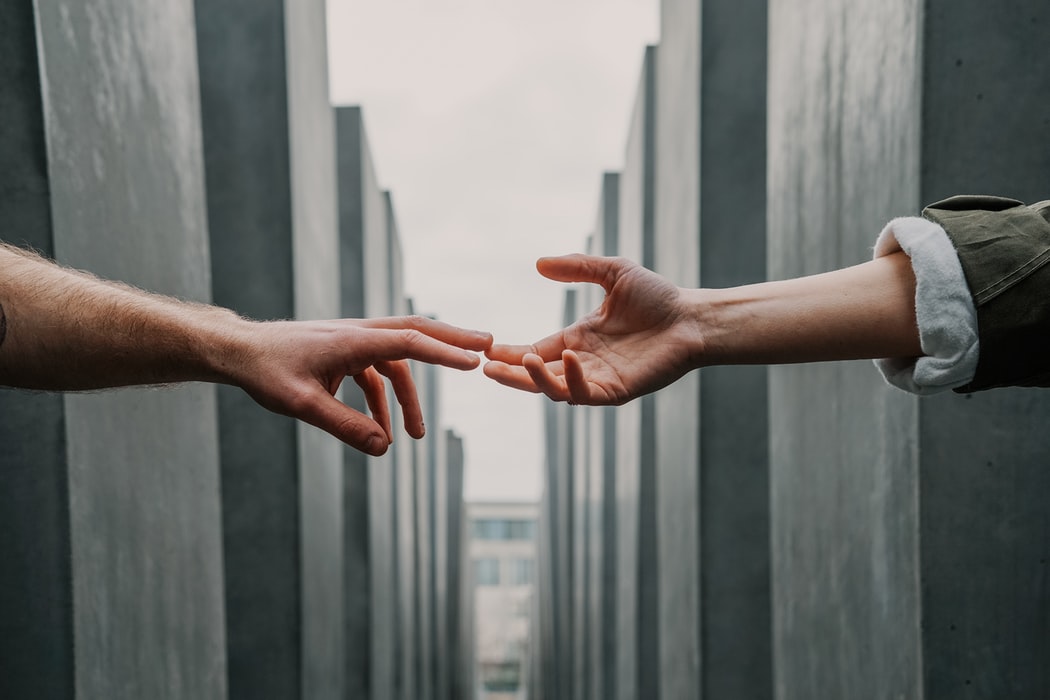The reality of our current existence is that living online is literally a matter of life and death. Doing things virtually means lowering the risk of spreading the deadly coronavirus. In Judaism, pikuach nefesh, saving a life, takes precedence over all other mitzvot, commandments. The rabbis of the Talmud derive this principle from Leviticus: “And you will guard my decrees and my judgments, that man will do them, and he will live by them” (Lev 18:5) to which the rabbis add: “and not that he will die by them” (b. Yoma 85b). Any commandment is violable if it saves a life.
The commandment of pikuach nefesh, an ethical principle in development since the rabbis of antiquity, is at the forefront of how some rabbis today are approaching the pandemic. Life comes first. The traditional observance of rituals must be put aside for the safety of the community. My Jewish community has suspended all in-person services for the foreseeable future. This has been no real inconvenience for me, I continue to pray in isolation, and remain connected to my community online. But for those who experience the passing of a loved one during the pandemic, there is a significant emotional rupture created by the lack of physical community. Judaism flourishes when it is allowed to comfort the mourner, but Judaism could not predict our current world of social distancing and isolation.
It is up to the rabbis to decide how to best apply Jewish mourning practices during the pandemic. As a research associate with the Pluralism Project at Harvard Divinity School this Summer, I collected a survey of responses to the pandemic among Twin Cities rabbis. Most rabbis in the area signed onto statements released by the Minnesota Rabbinical Association (MRA) outlining their ethical response to Jewish communal practice and COVID-19. The MRA came out with a unanimous statement in support of the StaySafeMN ordinance issued by the governor’s office in May. In line with this ordinance, all Jewish worship and life cycle events are continuing to take place remotely. A separate statement was released on funeral practices during the pandemic. The rabbis of the MRA wanted to raise up the difficulty of fulfilling their “rabbinic responsibility to honor the dead (k’vod hamet), comfort the mourning (nichum aveilim), and protect the community (pikuach nefesh).” The statement lands on the virtual realm as the safest arena for funerals to take place, with only mortuary professionals in physical attendance at the graveside. It is an imperfect solution in an impossible situation for mourners, but it is in the best interest of the community.
The practical effects of these statements weigh heavily on the clergy, the mourners and the dying. One rabbi told me a heartbreaking story of a lifetime congregant, a force around the synagogue, who was nearing the end of their life. They requested the presence of the rabbi at their bed for last confession (vidui), but the rabbi had to refuse out of concern for the principle of pikuach nefesh. It was an unimaginable predicament for this rabbi. But he had to put aside his doubts and premonitions to go forward with the ritual, into the unknown territory of virtual mourning.
For generations, Jews have mourned in person, the physical community acting as a tangible source of comfort. We are now witnessing a break in tradition, a new way to mourn forced upon us by necessity. But with every great change comes the opportunity for innovation. Many rabbis I spoke to found that while the virtual platform takes some getting used to, particularly Zoom, it is still possible to create genuine moments of emotion and connection through the age-old rituals of Jewish practice, even if they’re glitchy. Evidence of this connection is seen in the rise of attendance at Jewish worship services. A majority of the Twin Cities rabbis agree that live-streamed service and Zoom-meeting minyan will become mainstays of Jewish life even after the pandemic. And rabbis hardly ever agree.
Beyond Jewish religious attendance, the new realities of mourning online are able to sanctify the virtual sphere as a genuine space of human experience and connection. For many of us these days, most of our life is lived online. It is certainly fair to say that for myself. When I receive my weekly screen use update on my iPad, I cringe. The majority of my waking hours are spent on that flat device. I have to remind myself: “Ethan, you are a graduate student. You attend Harvard Divinity School from your parent’s basement. You have to be on your iPad all the time to do what you do.” But it is still uncomfortable to think of myself absorbed in that space for so long, ignoring my surroundings. Virtual reality is a very real part of my life, and it becomes even more real when I remember that the internet I use to study every day is the same internet where the living mourn the dead. While the internet is thought of as a space where scholarship and cold hard data can thrive, it can also be a breeding ground for meaning and emotion. Were a historian to look at 2020 without looking at the virtual sphere, they would miss the majority of American religion, culture and discourse. Mourning our loved ones online moves human experience into virtual space and marks that space as sacred and timeless. When mourners speak the Mourner’s Kaddish into a virtual minyan, it dissipates, becoming literally and metaphorically suspended above us, connecting us all. While the virtual sphere can seem limiting and impersonal at times, there must also be an awareness of the incredible opportunity for connection and meaning in our virtual lives.
Want to keep connected to The Conversation Project? Sign-up for our newsletter(s), follow us on social media (Twitter, Facebook), download our conversation starter resources and feel free to reach us at ConversationProject@ihi.org.

